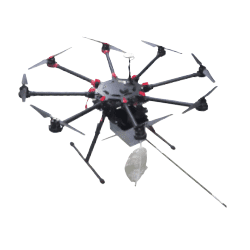Search WikiOdour by Keyword
Odour
an odour or odor is a chemical compound that a human or animal can perceive through utilizing smell. odours can sometimes be referred to as a smell or a fragrance. Above all, it can be generally be referred to hedonically through a system of adjectives ranging from foul to pleasant. Scent can refer to a positive or negative smell, however, the terms fragrance & aroma are reserved for pleasant smells. Stench, smell, and stink are typically reserved for bad smells.
How Do We Smell?
Our sense of smell is governed by the olfactory bulb located in the forebrain of vertebrates. This is found high up in our noses. Small patches of tissue known as the olfactory epithelium contain millions of receptor neurons, operating as sensory signalling cells. The olfactory system is responsible for analyzing molecules located in the air and translating this data utilizing these nerve signals into the brain to be processed.
Just like taste, both senses rely on the perception of molecules. Olfaction is one of the most powerful senses, as our sense of smell allows us to detect the flavours in the food we eat. Studies have proven that olfaction is amazing enough to even trigger memories and influence our moods or behaviour! These systems are so complex, that humans are capable of detecting at least one trillion distinct scents.
The Advent of Olfactometers
In 1870 Germany, the concentration of odours was known as Olfaktometrie, which helps to quantify the human sensory experience of odours according to substance concentration, intensity, quality, and even a hedonic assessment.
Today, an olfactometer establishes a sense of odour concentration. It employs a group of human panellists, a diluted odorous mixture, and an odour-free gas N-Butanol (click here to see N-Butanol in our product lineup) to serve as a reference point. These are presented through sniffing ports to a series of panellists, who have already been perceived as odour sensitive. Odour samples are generally collected and stored in odour free sample bags that are sealed firmly to prevent degradation. Typically, any component which comes into contact with the sample must be odour free.
In comparing the smell emitted from each port, and through increasing the dilution of gas, the panellists are asked to repeat the test. This continues until the panellist responds with certainly and correctly twice in a row. It is through these responses that a single odour unit can be calculated.


